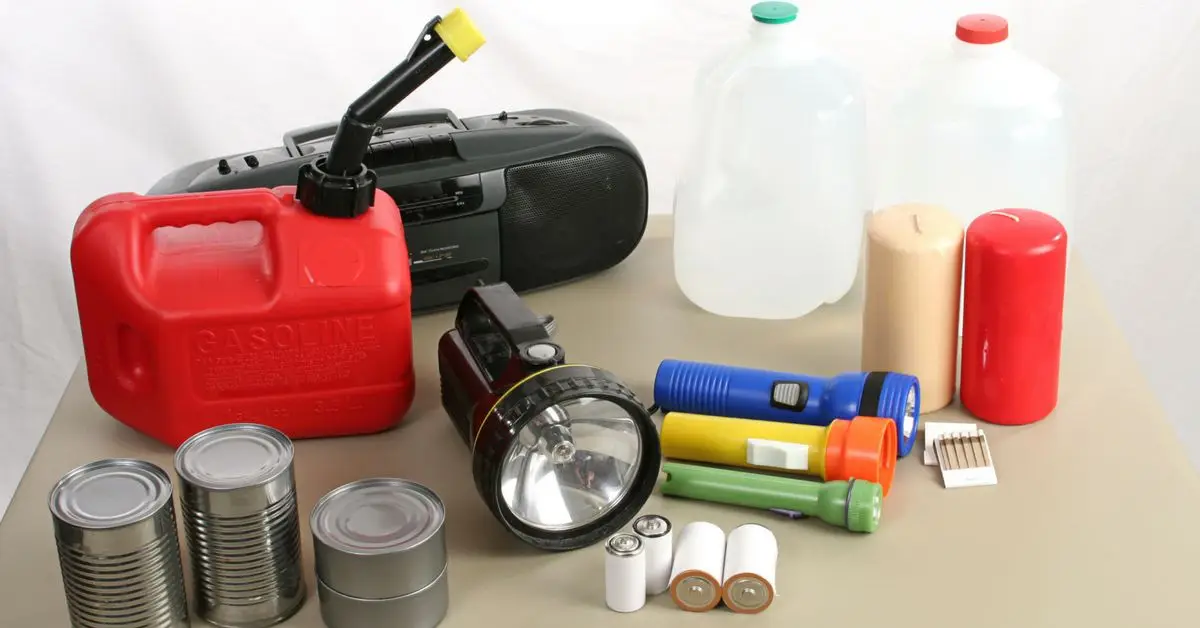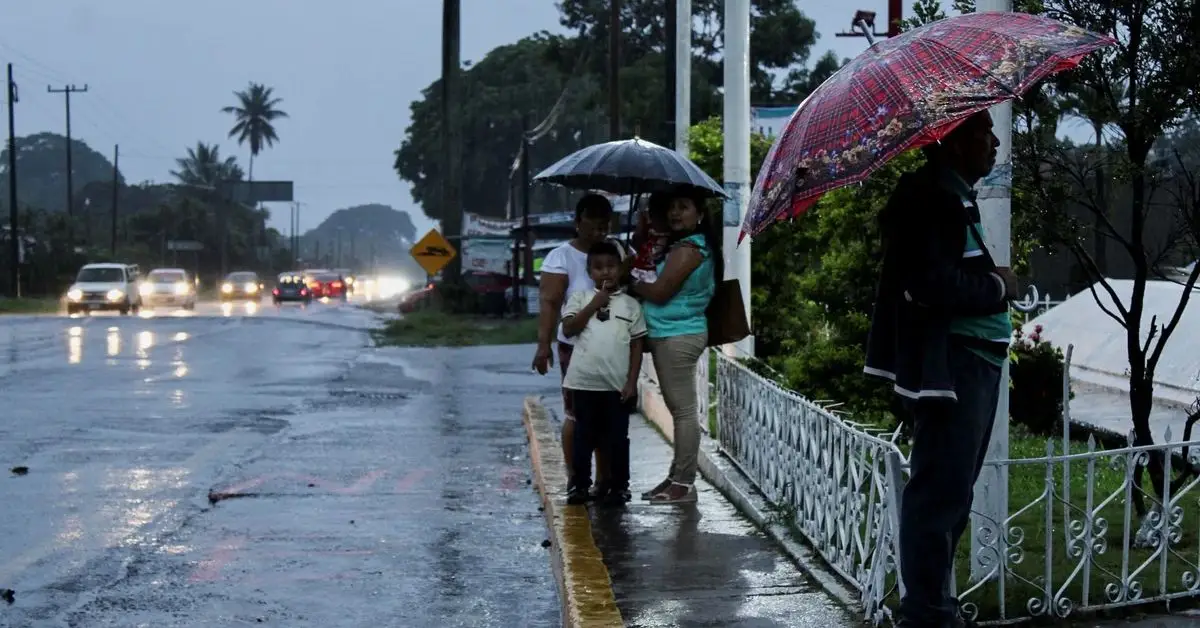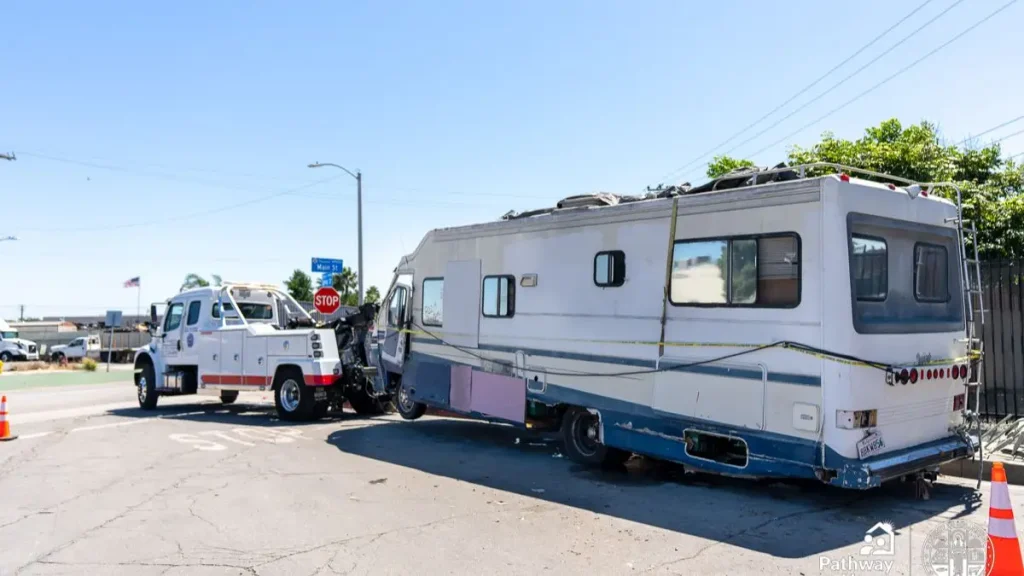You’re Not Ready—Until You’ve Done These 10 Things for Hurricane Prep
If you’ve ever lived through a hurricane—or even waited for one that never came—you know the quiet dread that builds in your chest. The cone, the alerts, the empty shelves at the grocery store… it’s not just about the storm. It’s about what comes after—the power outages, the water damage, the slow insurance calls, and that gut-punch realization that you weren’t ready.
I’ve been there. And I’ve watched too many smart people get caught off guard—not because they were careless, but because no one ever told them what really matters before the storm hits.
That’s what this list is for.
Not the usual “buy water and batteries” checklist. This is the real stuff. The overlooked things. The costly mistakes. The easy wins. The decisions you can make today that might just save your roof, your wallet, or your peace of mind.
You won’t need everything here all at once—but you will need most of it before the next hurricane hits. So let’s start now, while the skies are still clear.
1. Understand Your Risk & Timeline
If there’s one thing I’ve learned after years of living through hurricane seasons, it’s this: the storm doesn’t have to hit your town directly to wreck your life.
Storms are bigger, wetter, and slower now. In 2024, we saw inland flooding hundreds of miles from the coast. Roads were underwater. People without flood insurance lost everything—and they weren’t even in evacuation zones.
So before anything else, ask yourself:
Do I really understand the risks where I live?
Check your zone. Look at updated flood maps. Don’t assume just because you’re “not on the coast” that you’re safe.
The National Weather Service has a solid hurricane planning page , and it’s worth spending 10 minutes with it. If you live in a state like Texas, Florida, or the Carolinas, May through November isn’t just “storm season”—it’s potential life-upside-down season.
Also: don’t wait until the storm is already named. Preparation isn’t something you do when it’s on the news—it’s what you do in the quiet weeks before. The best time to act is before hurricane season starts, not when the grocery store is already wiped out.
The 2025 season is forecasted to be more intense than usual. UNC climate scientists are warning about warmer Atlantic waters fueling more severe storms. That gives us a window. Use it.
If you’re thinking about relocating to reduce your storm risk, you might want to explore the best states where you can afford a home and actually enjoy life.
Check your risk. Mark your calendar. Prep starts now.
Have you checked your flood or evacuation zone this year? If not, do it today—and let me know what surprised you.
2. Get a Roof & Property Inspection Before It’s Too Late
Here’s something people don’t talk about enough: most hurricane damage doesn’t come from the eye of the storm—it comes from the stuff you didn’t fix in time.
I’ve seen homes get torn apart because of one loose shingle, a half-rotted tree limb, or a rusted-out gutter. And insurance? They love to deny claims if they think the damage was “pre-existing.” That’s why this step matters so much.
Call a licensed roofer and get a quick inspection—even if your roof “looks fine.” Ask them to check for cracked shingles, weakened flashing, or soft spots. Trust me, the cost of a small repair now is nothing compared to what a tarp and a mold infestation will cost you later.
Also: walk your yard.
- Trim any tree limbs hanging over your roof or power lines.
- Secure loose fences.
- Clean gutters and drains so water flows away from your house.
- If you have patio furniture or a grill, figure out where you’ll store it—don’t wait until the wind’s blowing sideways.
Most people only rush into this two days before landfall. By then? It’s too late.
What You Can Do Today:
Have you had your roof checked in the last 12 months? If not, book someone now—before everyone else does.
Long-term protection isn’t just about individual prep—it’s also about the policies that shape where and how we build. If you’re curious, here’s a deeper look at how smarter housing laws could protect us from disasters.
3. Review Your Insurance—and Document Everything

Let me be blunt: if you wait until after the storm to check your insurance coverage, you’re already too late.
Most people don’t know this, but flood damage isn’t covered under standard homeowners insurance. Neither is wind damage in some coastal policies. And even if you’re covered, there’s often a hurricane deductible that kicks in—and it’s usually thousands of dollars.
So here’s what to do before the chaos starts:
1. Call your insurance company. Ask them directly:
- “Am I covered for both wind and flood?”
- “What’s my hurricane deductible?”
- “What’s the claims process if my roof or car gets damaged?”
2. Take a home inventory.
- Walk through your house with your phone and record everything: appliances, electronics, furniture, even the serial numbers if you can.
- Save the video to the cloud (Google Drive, iCloud, Dropbox—anywhere but your phone alone).
This sounds tedious, but after the storm, when emotions are high and everything’s upside down, that video will be your proof.
I once saw a family fight with their insurance company for 9 months—until they pulled out a timestamped video from the week before the hurricane. Got their full payout in 3 weeks after that.
Also, if you’ve done any upgrades—storm shutters, a new roof, sump pumps—make sure your insurer knows. Some policies offer discounts, but only if they’re documented in advance.
Do you know your hurricane deductible right now? If not, take 10 minutes to call your provider. It’s boring—but it could save you thousands.
4. Build a “Go Bag” You Can Actually Trust
Let’s say the power goes out. Your street is flooding. You’re told to evacuate—and fast. You have 10 minutes. What do you grab?
This is why every household needs a go bag—a small, packed emergency kit that’s ready to leave when you are. And not the Pinterest version with six flares and a crank radio. I’m talking about the real stuff you’ll need in a crisis.
Here’s what should be inside:
- Copies of your ID, insurance, and house papers—in a waterproof pouch
- At least 3 days of medications (if you take any daily)
- Cash (yes, cash—ATMs often go down after storms)
- Phone charger + battery pack
- One change of clothes + socks
- Toothbrush, deodorant, travel wipes
- Flashlight or headlamp
- Snacks—granola bars, protein packs
- Any essentials for babies, elderly family, or pets
A guy on Reddit shared how his family had to leave at midnight during Hurricane Harvey. His go bag had dog food, Ziplocs of cereal for his kids, their passports, and an extra phone battery. They were out the door in minutes—while their neighbors were still trying to print insurance papers.
The point isn’t perfection. The point is speed. Your go bag lets you act instead of panic.
Keep it in a closet near the front door or wherever you’ll grab it fast. Check it once every 3–4 months to refresh meds and food.
Challenge for You: If you had to leave in 5 minutes—could you? What’s the one thing you’d wish you hadn’t forgotten?
5. Stock a Home Survival Kit That Can Last at Least a Week

Most people prepare for the hurricane.
Very few prepare for what happens after.
I’ve been through storms where the wind passed in a few hours—but the real crisis came later: no power, no clean water, grocery stores closed, gas lines stretching for miles. That’s why your survival kit matters.
FEMA says you should be able to go at least 72 hours without outside help. But ask anyone who’s lived through a major storm—7 days is a smarter target.
Here’s what your home survival kit should have (beyond the basics):
Water
- 1 gallon per person per day × 7 days
- Freeze water bottles now—keeps your fridge cold longer and becomes drinkable ice
- Fill your tub with water (use a WaterBOB or clean trash bags inside)
Food
- Shelf-stable meals: canned soup, beans, pasta, jerky, nut butter
- Manual can opener
- Easy-to-eat snacks: trail mix, dried fruit, crackers
- If you have kids, pack things they’ll actually eat
Power
- Battery-powered or solar radio (get NOAA alerts)
- Flashlights, headlamps, and extra batteries
- Power bank for phones (charge it in advance)
- Generator (if you have one) + enough fuel for 3–4 days
- Extension cords and surge protectors
Comfort & Extras
- First aid kit
- Trash bags, zip ties, duct tape
- Bug spray, sunscreen
- Wet wipes or no-rinse bathing wipes
- Board games, cards, or a book—it’s not all doom and gloom, but you will be bored
I once saw someone suggest keeping a camping stove and a French press in their kit. Sounds funny—until you realize how much a hot cup of coffee can do for your mood when everything around you is chaos.
Don’t rely on luck. Prepare like power’s not coming back for a week.
Try This: Pretend the power goes out right now for 3 days. What would you run out of first?
6. Fortify Your Home—And Know What Not to Do
When a storm is a few days out, you’ll start seeing your neighbors scramble—boarding windows, rushing to buy duct tape, dragging patio furniture into their garages.
But here’s the truth: some of that last-minute prep is helpful… and some of it just gives you a false sense of control.
Let’s sort it out.
What To Do
- Install storm shutters or use pre-cut plywood (⅝” thick, not thin boards)
- Clear your yard: Secure or bring in patio furniture, grills, potted plants, trash bins
- Trim weak tree limbs—especially near windows or power lines
- Anchor down anything that can fly: garden décor, mailboxes, even deck umbrellas
- Clean your gutters—you want water moving away from your house
- Sandbag low entry points, especially garage doors or basement vents
Tip from Reddit: Use contractor trash bags filled with potting soil—they mold to corners better than standard sandbags
What Not to Do
- Don’t tape your windows. It does nothing to protect them—and can make the glass more dangerous when it shatters.
- Don’t rely on “last minute” generators if you’ve never tested them. Make sure it’s working, fueled, and vented properly.
- Don’t leave vehicles parked under trees—find open space or garage protection.
If you rent or live in an apartment, ask your landlord now about storm policies—don’t wait until elevators go out or stairwells flood. A lot of renters think “it’s not my building, so not my problem.” Until their stuff is soaked.
Fortifying your space isn’t about perfection. It’s about removing the weak links.
What To Ask Yourself: If a Category 2 storm rolled in tonight, what’s the first thing around your home that would break or fly away?
7. Set Up a Communication Plan Before the Grid Goes Down
When the storm hits, your phone might still work—but the towers might not. Internet could be spotty. And if power goes out, how long will your devices last?
Most people prep for food and water. Few prep for information. But in a real emergency, staying informed can mean the difference between panic and control.
Here’s what you need in place:
- Battery-powered or hand-crank radio: NOAA Weather Radios broadcast updates even if your phone’s dead. Get one with SAME (Specific Area Message Encoding) for your region.
- Fully charged power banks: Not just one. Aim for 2–3, each with 10,000mAh or more. Charge them before the season starts and top off before each storm.
- Offline maps & contacts: Download Google Maps for your area. Save emergency numbers (FEMA, local shelter lines, neighbors, landlord) in a written notebook too.
- Text > Calls: During emergencies, cell networks prioritize texts over calls. They use less bandwidth and go through more reliably.
- Stay social—but smart: Follow local emergency management accounts on Twitter/X. Hashtags like #HurricanePrep and #StormUpdate [Your City] can provide faster updates than news stations.
If you have family or friends out of town, agree in advance:
Who’s your check-in contact?
If you get separated or lose power, they become the hub for updates.
Do This Now: Pick one out-of-town contact to be your emergency check-in person. Let everyone in your family know who that is.
8. Make an Evacuation Plan—Not Just an Exit
When officials say “evacuate,” that’s not a suggestion. That’s your shot to get out safely. But here’s what most people don’t realize: knowing that you should leave is not the same as being ready to leave.
Evacuation planning isn’t just about putting gas in the car. It’s about having a clear, stress-free answer to three critical questions:
1. Where are you going?
- Identify at least two options: one in your region (a friend’s house inland) and one out-of-state
- Know your evacuation zone—your city or county website will have maps (find it now, not later)
2. How are you getting there?
- Fill up your car as soon as a storm is named—not when the lines start
- If you have an electric vehicle, fully charge it early (power outages = no charging)
- Have a printed map in your glove box; GPS doesn’t help if the signal’s gone
3. What are you taking with you?
- Your go-bag
- Important documents, insurance files, extra chargers
- Pet supplies, food, vaccination papers
- Anything you’d hate to lose and can fit in 1–2 bins
A lot of people wait for the “official” order to evacuate. But by the time it comes, roads can already be jammed. One Houston family I talked to left early during Harvey and made it to Dallas in 4 hours. Their neighbors who waited? 13 hours stuck in traffic and had to sleep in their car.
And if you’re thinking “I’ll just ride it out,” ask yourself:
Do I want to be here without power, water, or emergency help for a week?
Because that’s the real risk—not just the storm, but what happens after.
If you had to evacuate tomorrow, where would you go—and does everyone in your household know the plan?
9. Don’t Go Through It Alone: Prep Your People Too

Here’s something no supply kit can fix: going through a hurricane without a support system.
Storms don’t just knock out power—they isolate people. And in that isolation, things get dangerous fast. Elderly neighbors get overlooked. Families get separated. Small problems turn into emergencies when no one knows who to call.
That’s why your hurricane prep has to go beyond your front door.
Check In With Neighbors
- Know who’s elderly, lives alone, or has medical needs
- Trade numbers now—not during the storm
- Set up a “storm buddy” system: If something goes wrong, who checks on who?
Prep Mentally Too
No one talks enough about how exhausting it is after a storm. The heat. The anxiety. The waiting.
Pack earplugs. Buy board games. Plan for boredom, especially if you have kids. Think about your mental health as much as your physical safety.
There’s a great line I read on Reddit last year:
“I thought I was prepared. But no one warned me how hard the silence and dark would hit on night three.”
So be ready emotionally. Talk about the plan with your family now—especially if you have kids. Let them know what might happen, what you’ll do, and how they can help.
Don’t Forget Pets
- Stock pet food, meds, leashes
- Keep vaccination records with your go-bag
- Not all shelters accept pets—know your options in advance
Storms can bring out the best in communities—but only if we show up for each other. Your neighbors might be your backup power, extra gas, or emergency help. You might be theirs.
Quick Question: Do you have a list of who you’d check on—or who would check on you?
10. Prep for What Happens After the Storm
Most hurricane guides stop when the storm does. But that’s when real life kicks in—messy, expensive, and frustrating.
After the wind dies down, you might be dealing with:
- Downed power lines
- Flooded streets
- No AC for days
- Insurance delays
- Short tempers and zero coffee
That’s why post-storm prep matters just as much as what you do before it hits.
Document Everything
- Take photos and video of your home before AND after the storm
- Don’t throw anything away until your insurance adjuster sees it
- Keep receipts for any emergency expenses (temporary lodging, supplies, repairs)
Prepare for Long Outages
- You might be without power for 3–10 days, depending on where you live
- Have a cooler and ice plan for perishables
- Battery-powered fans are a game-changer in humid climates
Sanitation Is Survival
- Keep heavy-duty trash bags and gloves handy
- Standing water = mold and disease fast
If your area floods, treat everything as potentially contaminated. If water does get into your basement, don’t panic—but do act fast. Here’s exactly what to do immediately after basement flooding to minimize damage and stay safe.
FEMA, Assistance, and “The Waffle House Index“
FEMA may offer temporary housing help, cleanup aid, or food assistance—but you have to apply quickly.
Recovery isn’t just about fixing what broke. It’s about managing the stress, staying safe, and avoiding the next wave of problems—financial, emotional, and physical.
Ask Yourself: If your house was standing but unlivable for 10 days, do you have a plan for where you’d go?
You Don’t Need to Do Everything—You Just Need to Start
Hurricane prep can feel overwhelming. I get it. Between work, family, and everything else, it’s easy to think,
“I’ll deal with it later.”
But storms don’t wait for your schedule.
The good news? You don’t have to do all 10 things today. Just pick one.
- Call your insurance provider
- Buy a case of water
- Pack your go bag
- Check in on a neighbor
- Walk your roof
Even one step puts you ahead of where you were yesterday—and way ahead of the people who are still assuming “it probably won’t hit here.”
Preparedness isn’t panic. It’s peace of mind. It’s knowing that if the worst happens, you’ve done what you could—and that matters.
Over to You:
What’s one step from this list you’re committing to this week? Drop it in the comments or share it with someone who needs a reminder.
Want help getting your home storm-ready?
Build Like New can inspect, repair, and fortify your property—before the next hurricane hits. Visit Build Like New for more tips
Disclaimer: This article is for informational purposes only and is not a substitute for professional advice. Always follow official guidance from local authorities, emergency services, and licensed contractors when preparing for a hurricane.


